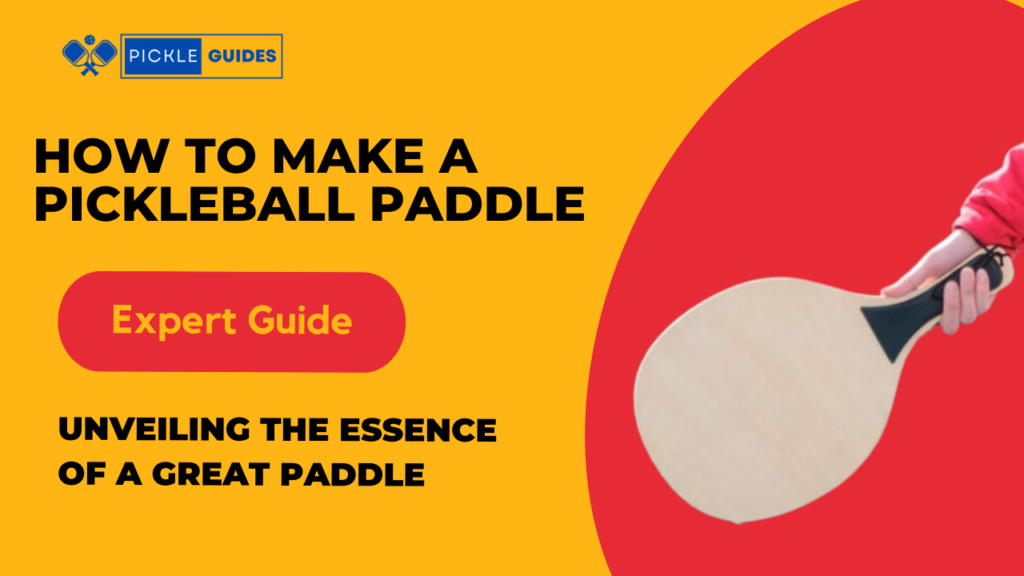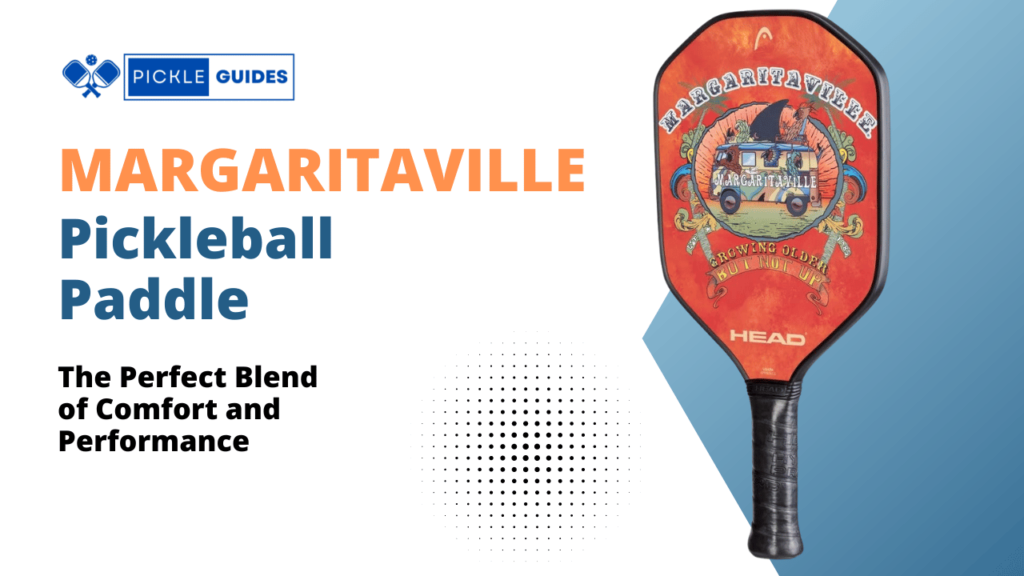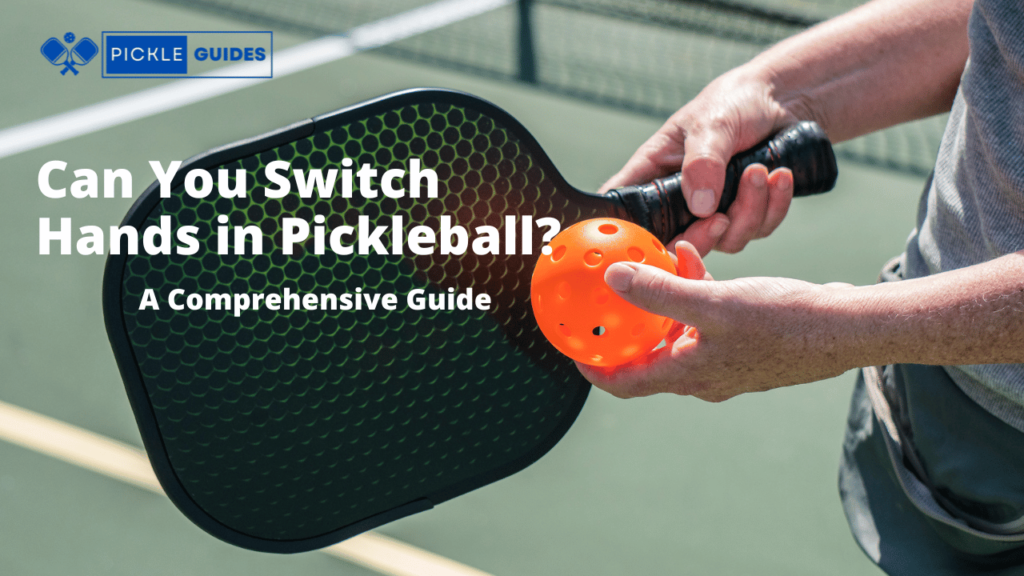Pickleball, a sport that combines elements of tennis, badminton, and ping-pong, has been taking the world by storm. A crucial element in this exciting game is the pickleball paddle. The right paddle can significantly enhance your performance and enjoyment on the court. In this comprehensive guide, crafted by pickleball aficionados and experts, we’ll walk you through the art of creating your very own pickleball paddle. Get ready to serve up your best game yet!
The Magic in Your Hands: Crafting Your Own Pickleball Paddle
Unveiling the Essence of a Great Paddle
A pickleball paddle is more than just equipment; it’s an extension of your skills and style. As experts in the field, we understand that every player is unique. That’s why the journey of crafting your own paddle begins with understanding your playing style, grip preferences, and desired paddle characteristics. By tailoring your paddle to your strengths, you’re already one step closer to success.
Choosing the Right Materials
High-quality materials are the foundation of a superior pickleball paddle. We emphasize the use of durable and lightweight materials such as graphite and composite cores. These materials not only ensure durability but also allow for optimal control and power. By selecting the right materials, you’re setting the stage for a top-tier pickleball experience.
Table: Materials Comparison for Pickleball Paddles
| Material | Advantages | Disadvantages |
| Graphite | Excellent power and control | Can be more expensive |
| Composite | Durable and versatile | Slightly heavier than graphite |
| Polymer | Lightweight with good control | May lack the power of graphite or composite |
| Wood | Traditional feel; can be cost-effective | Limited performance compared to modern materials |
Crafting Process: From Vision to Reality

Step 1: Paddle Shape and Dimensions
Your paddle’s shape and dimensions greatly influence your performance. According to consensus among pickleball experts, the standard dimensions of a paddle are 17 inches in length, 7 inches in width, and 1/2 inch in thickness. However, within these parameters, there’s room for creativity. Choose a shape that complements your playing style, whether it’s wide-body, elongated, or traditional.
Step 2: Core Selection and Assembly
The core is the heart of your paddle. Most players prefer polymer or honeycomb cores for their balanced combination of power and control. As experts, we recommend following the established guidelines for core thickness, which usually ranges from 3/8 to 5/8 inches. To ensure precision and consistency, take your time during the core assembly process. Your paddle’s performance will reflect the care you put into this step.
Step 3: Paddle Face and Surface
The surface of your paddle can drastically alter its behavior on the court. Scientifically, a textured surface increases spin and control, while a smooth surface enhances power. Our experts advocate for a textured face, as it offers versatility and adapts to various playing conditions. Embrace the fusion of science and craftsmanship, and let your paddle’s surface elevate your game.
Step 4: Grip Customization
Grip comfort and size are personal preferences that should never be underestimated. Studies indicate that a comfortable grip minimizes the risk of strain and enhances shot accuracy. To find your ideal grip size, measure the distance between the center of your palm and the tip of your ring finger. This measurement should guide you toward the right grip size for your paddle.
Table: Step-by-Step Guide to Making a Pickleball Paddle
| Step | Description |
| Step 1 | Decide on paddle shape and dimensions, considering your playing style and grip preferences. |
| Step 2 | Select core materials (e.g., polymer or honeycomb) and assemble them to achieve the desired thickness. |
| Step 3 | Attach the chosen surface material (e.g., composite or graphite) to the core securely. |
| Step 4 | Apply grip tape that suits your hand size and offers comfort and control during play. |
| Step 5 | Sand the edges and surface for a smooth finish, ensuring there are no rough or uneven areas. |

Table: Pros and Cons of Playing Pickleball on Different Surfaces
| Surface | Pros | Cons |
| Asphalt | Common and easily accessible; provides good ball bounce. | May be less forgiving on joints. |
| Concrete | Durable and consistent; suitable for recreational play. | Hard surface can cause joint discomfort. |
| Acrylic | Offers consistent bounce and traction; preferred for tournaments. | May require regular maintenance. |
| Composite | Provides optimal ball response and player comfort. | Installation can be more expensive. |
| Rubber Mat | Soft and forgiving surface; ideal for indoor play. | May not replicate true court conditions. |
Frequently Asked Questions
Can You Make Your Own Pickleball Paddles?
Absolutely, making your own pickleball paddle can be an exciting and rewarding endeavor. Crafting your own paddle allows you to tailor it to your unique playing style and preferences, enhancing your performance on the court.
Can You Make a Pickleball Paddle Out of Wood?
While wood was commonly used in the early days of pickleball, modern paddle designs often favor materials like graphite, composite, and polymer cores. These materials offer a better balance of power, control, and durability compared to wood. While it’s technically possible to make a pickleball paddle from wood, it may not provide the same level of performance as newer materials.
Can a Pickleball Paddle Have a Rubber Surface?
Yes, pickleball paddles can have a rubber surface. Many paddles feature a rubberized layer on the face, which helps create spin and control during play. However, the majority of modern pickleball paddles use composite or graphite materials for their surfaces due to their enhanced performance benefits.
How to Make Pickleballs?
Creating pickleballs involves a unique manufacturing process that combines specialized materials to achieve the distinctive bounce and playability of the ball. These balls are typically made using a combination of plastic materials that are molded and fused together. The process ensures consistency and quality in every pickleball produced.
Can You Play Pickleball on a Rubber Mat?
Yes, you can play pickleball on a rubber mat. Rubber mats can provide a suitable playing surface for pickleball, especially in recreational or indoor settings. However, for a more authentic experience, many players prefer playing on courts specifically designed for pickleball, which often have surfaces made of acrylic or composite materials.
What Surface Can Pickleball Be Played On?
Pickleball can be played on a variety of surfaces, including indoor and outdoor courts. Common surfaces include asphalt, concrete, acrylic, and composite materials. The key is to have a smooth and even playing surface that allows for consistent ball bounce and player movement.
What Is the Best Wood for Paddles?
When it comes to making pickleball paddles, wood is no longer the preferred material due to its limitations in terms of performance and durability. If you’re still interested in wood, consider using hardwoods like maple or birch, which are known for their strength. However, for optimal performance, modern materials like graphite and composite are recommended.
Can You Hold a Pickleball Paddle Like a Ping Pong Paddle?
While both pickleball and ping pong paddles have similarities, they are designed for different sports with distinct playing styles. Pickleball paddles are generally larger and designed for a two-handed grip, while ping-pong paddles are smaller and often used with a single-handed grip. It’s recommended to hold a pickleball paddle according to its intended design for better control and performance.
How to Make a Paddle?
To make a pickleball paddle, follow these general steps:
Choose Your Materials: Select a core material, such as polymer or honeycomb, and a surface material, such as composite or graphite.
Design the Shape: Determine the shape and dimensions of your paddle. Standard dimensions are 17 inches in length, 7 inches in width, and around 1/2 inch in thickness.
Assemble the Core: Glue the core material layers together according to your chosen thickness.
Apply the Surface Material: Attach the surface material to the core, ensuring a secure and even bond.
Add Grip: Apply a grip tape that suits your hand size and playing style for comfort and control.
Finishing Touches: Sand the edges and surface as needed to ensure a smooth finish.
Conclusion: Your Personalized Path to Paddle Excellence
As experts deeply passionate about pickleball, we’ve crafted this guide to empower you with the knowledge and excitement needed to create your very own pickleball paddle. By blending scientific insights with craftsmanship, you’re embarking on a journey that transcends equipment it’s a journey of self-expression, skill enhancement, and boundless enjoyment on the court. Remember, your personalized paddle isn’t just a tool; it’s your winning edge. Play on, and savor the fruits of your paddle-crafting labor!



